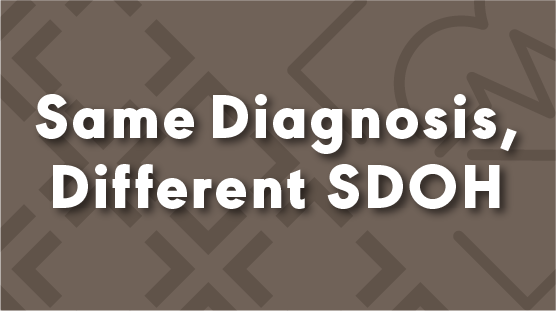Social Determinants of Health
Social determinants of health (SDOH) are non-medical variables that form our big picture of health. Where we live, work, and play influences our health and health care experiences. By considering client SDOH, audiologists and speech-language pathologists (SLPs) can provide better quality care, advocate for health equity, and achieve better outcomes.
What Are SDOH?
Which factors influence client health? Learn about protective factors, social risk factors, and social needs.
What's My Role?
How do SDOH fit into your clinical scope and responsibilities? Consider how to screen, make referrals, and share information.
Tools and Support
Access screening tools and referral resources. Learn which ASHA teams can answer your SDOH questions.
Same Diagnosis, Different SDOH
Meet two characters, Antonio and Ronald, and discover how their SDOH changes after a major health event.

An exciting new interactive experience is on its way!
Learn More About SDOH
Watch, listen, and read more about SDOH. Connect your knowledge to related frameworks, and explore continuing education opportunities.















